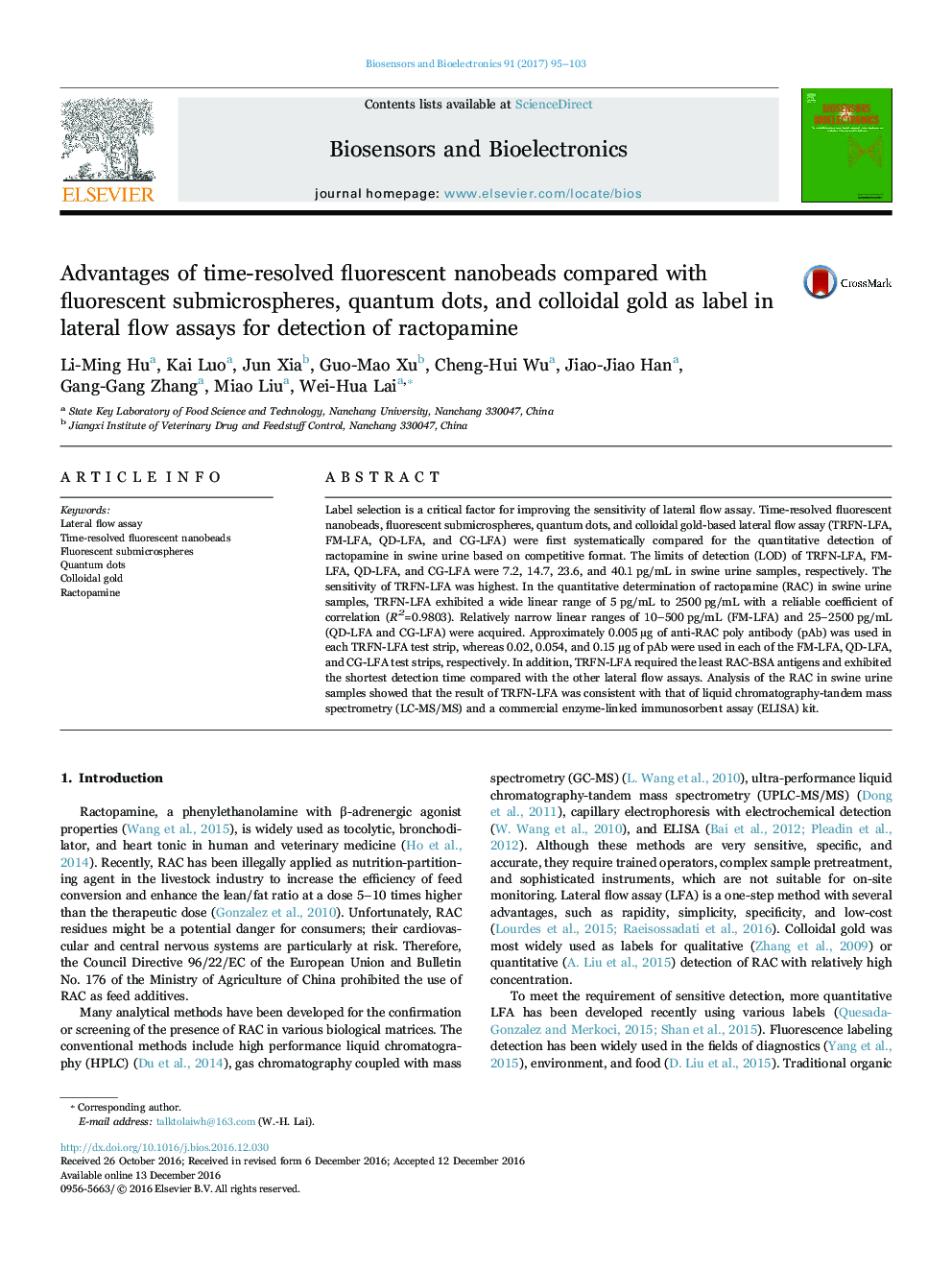| Article ID | Journal | Published Year | Pages | File Type |
|---|---|---|---|---|
| 5031135 | Biosensors and Bioelectronics | 2017 | 9 Pages |
Abstract
Label selection is a critical factor for improving the sensitivity of lateral flow assay. Time-resolved fluorescent nanobeads, fluorescent submicrospheres, quantum dots, and colloidal gold-based lateral flow assay (TRFN-LFA, FM-LFA, QD-LFA, and CG-LFA) were first systematically compared for the quantitative detection of ractopamine in swine urine based on competitive format. The limits of detection (LOD) of TRFN-LFA, FM-LFA, QD-LFA, and CG-LFA were 7.2, 14.7, 23.6, and 40.1 pg/mL in swine urine samples, respectively. The sensitivity of TRFN-LFA was highest. In the quantitative determination of ractopamine (RAC) in swine urine samples, TRFN-LFA exhibited a wide linear range of 5 pg/mL to 2500 pg/mL with a reliable coefficient of correlation (R2=0.9803). Relatively narrow linear ranges of 10-500 pg/mL (FM-LFA) and 25-2500 pg/mL (QD-LFA and CG-LFA) were acquired. Approximately 0.005 µg of anti-RAC poly antibody (pAb) was used in each TRFN-LFA test strip, whereas 0.02, 0.054, and 0.15 µg of pAb were used in each of the FM-LFA, QD-LFA, and CG-LFA test strips, respectively. In addition, TRFN-LFA required the least RAC-BSA antigens and exhibited the shortest detection time compared with the other lateral flow assays. Analysis of the RAC in swine urine samples showed that the result of TRFN-LFA was consistent with that of liquid chromatography-tandem mass spectrometry (LC-MS/MS) and a commercial enzyme-linked immunosorbent assay (ELISA) kit.
Related Topics
Physical Sciences and Engineering
Chemistry
Analytical Chemistry
Authors
Li-Ming Hu, Kai Luo, Jun Xia, Guo-Mao Xu, Cheng-Hui Wu, Jiao-Jiao Han, Gang-Gang Zhang, Miao Liu, Wei-Hua Lai,
